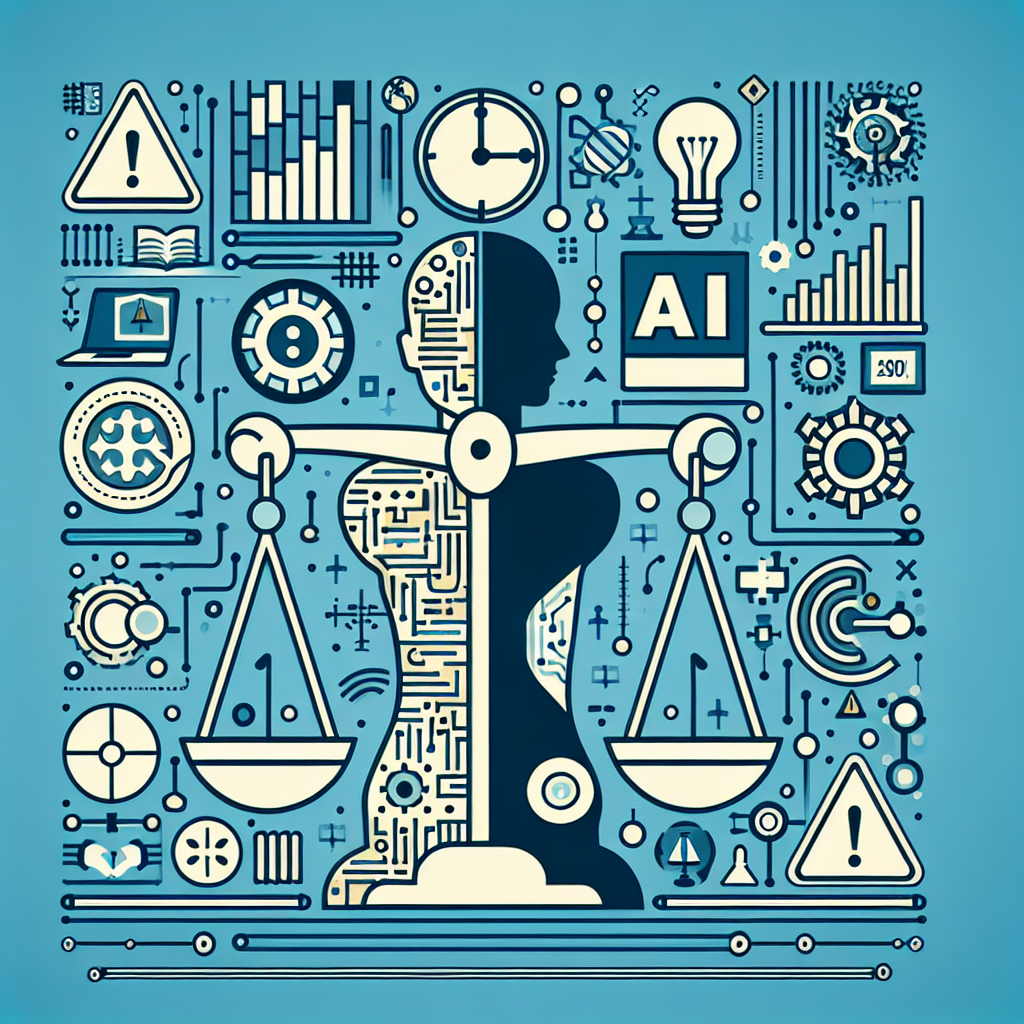The Ethics of AI: Addressing the Risks
Artificial Intelligence (AI) has undoubtedly revolutionized many aspects of our daily lives, from streamlining business operations to enhancing healthcare services. However, as AI becomes more sophisticated and integrated into various sectors, questions surrounding its ethical implications have come to the forefront. Concerns about privacy, bias, job displacement, and autonomous decision-making have sparked debates on the need for ethical guidelines and regulations to address these risks.
In this article, we will explore the ethical considerations of AI, the potential risks it poses, and the steps that can be taken to mitigate these risks.
The Ethical Considerations of AI
One of the key ethical considerations of AI is the issue of bias. AI systems are trained on vast amounts of data, and if this data is biased or incomplete, the AI system may inadvertently perpetuate and amplify existing biases. For example, if an AI system is trained on data that is predominantly male-centric, it may exhibit gender bias in its decision-making processes. This can have serious implications, such as discrimination in hiring practices or healthcare treatment.
Another ethical consideration is the issue of privacy. AI systems often collect and analyze large amounts of personal data to make predictions or recommendations. This raises concerns about how this data is used, stored, and protected. Without proper safeguards in place, there is a risk of unauthorized access or misuse of personal information, leading to privacy breaches and violations of individuals’ rights.
Furthermore, the rise of autonomous AI systems raises questions about accountability and responsibility. Who is responsible if an AI system makes a mistake or harms someone? Should the developer, the user, or the AI system itself be held accountable? These questions highlight the need for clear guidelines on ethical AI development and deployment.
The Potential Risks of AI
While AI has the potential to bring about significant benefits, there are also risks associated with its widespread adoption. One of the main risks is the displacement of human workers. As AI systems become more advanced and capable of performing tasks traditionally done by humans, there is a concern that many jobs will be automated, leading to unemployment and economic instability.
Another risk is the potential for AI systems to make biased or discriminatory decisions. As mentioned earlier, if AI systems are trained on biased data, they may perpetuate and amplify existing biases, leading to discriminatory outcomes in various domains, such as hiring, lending, and criminal justice.
There is also a risk of AI systems being used for malicious purposes, such as spreading misinformation, conducting cyberattacks, or engaging in surveillance. Without proper regulations and oversight, AI technology can be weaponized and used to harm individuals or societies.
Steps to Address the Risks of AI
To address the ethical risks of AI, it is essential to develop robust ethical guidelines and regulations that govern the development, deployment, and use of AI systems. These guidelines should prioritize transparency, accountability, fairness, and privacy protection to ensure that AI technologies are developed and used responsibly.
One important step is to ensure that AI systems are designed and trained on diverse and unbiased data sets to mitigate the risk of bias. Developers should also implement mechanisms to detect and correct biases in AI systems to ensure fair and equitable outcomes.
Transparency is another key principle that should be prioritized in AI development. AI systems should be transparent in their decision-making processes, so that users can understand how decisions are made and hold developers accountable for any errors or biases that may arise.
Accountability is also essential in addressing the risks of AI. Developers and users should be held accountable for the decisions and actions of AI systems, and mechanisms should be in place to address any harm caused by AI technologies.
Finally, privacy protection is crucial in safeguarding individuals’ rights and data. AI systems should adhere to strict privacy regulations and guidelines to ensure that personal information is collected, stored, and used responsibly.
FAQs
Q: What are some examples of biased AI systems?
A: One example of biased AI systems is facial recognition technology, which has been found to exhibit racial and gender biases in its identification processes. Another example is hiring algorithms that have been shown to discriminate against certain groups based on gender or race.
Q: How can bias in AI systems be mitigated?
A: Bias in AI systems can be mitigated by ensuring that AI systems are trained on diverse and unbiased data sets, implementing mechanisms to detect and correct biases, and prioritizing transparency in decision-making processes.
Q: Who is responsible for the decisions made by AI systems?
A: The responsibility for the decisions made by AI systems can vary depending on the context. In some cases, developers may be held accountable for the design and training of AI systems, while in other cases, users or the AI system itself may be held responsible.
Q: How can privacy be protected in AI systems?
A: Privacy in AI systems can be protected by adhering to strict privacy regulations and guidelines, implementing robust security measures to protect personal data, and ensuring that data is collected, stored, and used responsibly.
In conclusion, the ethical considerations of AI are complex and multifaceted, requiring careful consideration and proactive measures to address the risks associated with its widespread adoption. By prioritizing transparency, accountability, fairness, and privacy protection in AI development and deployment, we can ensure that AI technologies are developed and used responsibly to benefit individuals and society as a whole.

